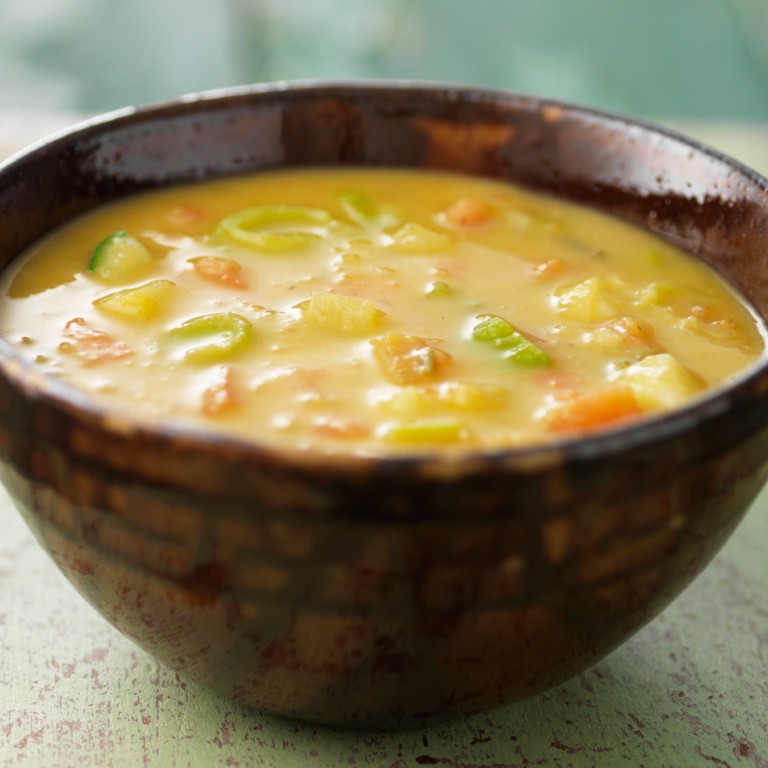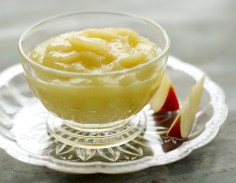
Gruel and unusual diets: Do they work?
Are fad diets all they’re cracked up to be? We try some popular ones, from Paleo to baby food
48 Hours staff suffer some extreme diets in the name of reader education.


Alkaline diet
Claim: it is based on the belief that foods that affect acidity in bodily fluids like blood and urine can lead to cancer, heart disease, arthritis and diabetes. An alkaline diet is supposed to help prevent these conditions, but there is no scientific proof of its efficacy.
It requires eating alkaline-yielding foods, such as fruits, vegetables, nuts, grains and legumes, while avoiding meat, fish, poultry, flour, dairy, processed foods, sugar, caffeine and alcohol.
48-hour experience: it’s not much of a stretch for me because I’m trying to eat more vegetables and fruit, anyway. But despite having my usual breakfast of oatmeal with almonds, walnuts and blueberries and an apple, I was suffering from hunger pangs just before noon, it was because of jet lag from a recent trip to the US. I snacked on some dried cranberries, but the lunch of poached spinach filled me up with a little bit of rice. Dinner was a home-made vegetable soup with quinoa, and was definitely filling.
After going to bed very early in the hope of resetting my body clock – something I haven’t done since I was a kid –my second day was much better. Breakfast was again oatmeal with an apple, and then lunch was poached baby bok choy with some rice. Chocolates were passed around in the office, but I avoided them, although if I wasn’t on the diet I’d have had one. Dinner was the hearty vegetable soup again. The diet does make for limited dining options.
Conclusion: overall, it’s good for people who are keen on eating more healthily as it advocates avoiding processed foods, alcohol and caffeine. In this way, it is similar to a strict vegetarian diet.
Trying to follow it to the letter could be difficult as there are many variations on foods considered acidic or alkaline.
This diet could cause to you to become a hermit.
Bernice Chan


Baby food diet

Claim: created by American celebrity trainer Tracy Anderson a few years ago, and said to have helped stars such as Jennifer Aniston and Lady Gaga lose weight. It is straightforward: substitute meals and snacks with 14 jars of baby food each day, with an option of eating a healthy dinner at night. It is an onthe- go diet that works by controlling the portion and calories intake.
48-hour experience: although some of my friends were disgusted by the idea of eating baby food, I was looking forward to trying this diet. It was fun shopping for baby food, and it’s made of all the ingredients we usually eat, but puréed.
The first morning started off fine, and I finished three jars by 9am. The apple and peach dessert with pieces of fruit inside and the lumpy sweet corn were pretty tasty. I also finished the tropical fruit medley, although it was very sweet.
Hunger struck before noon so I opened a jar of Aloha mango chicken – a mild, soupy concoction that I finished without a problem. But my nightmare began when I had my first spoonful of the thick and sludgy tender beef and vegetables. I forced myself to eat more in the next two hours but I figured I didn’t like the taste of peas in it, so I opened the more cheerfully coloured spaghetti with tomatoes and mozzarella. It took me another two hours before giving up and feeling guilty about having only two spoonfuls from each jar. Maybe I was hallucinating, but I could have sworn I saw the babies on the jar caps and labels laughing at me.

I began to feel grumpy and a bit dizzy with a hollow stomach, so I went for another jar of apple purée, which was so sweet that I got annoyed and decided not to eat any more baby food for the rest of the day. That’s when I remembered I had the option of eating a healthy dinner. I went for a plate of plain vegetables in a noodle place. I felt better right away.
The next morning I wasn’t very hungry, and the jar of prunes, my last jar of fruit mash, plus plenty of water lasted me until about 2pm. I washed down the cheesy spinach and potato bake with water before I left the office for a press conference. I didn’t even bother to take a jar with me, as I couldn’t imagine popping it open in public, let alone eating it. I ate some vegetables again at night and went to bed early, looking forward to a nice breakfast.
Conclusion: this diet is going to help you lose weight if you hate baby food. The bland mush will literally put you off opening a new jar and you will end up fasting like I did. But you will still lose weight, even if you did finish the 14 jars of baby food, as most of them are pretty low in calories. It can be quite healthy, as most baby food guarantees no preservatives or artificial flavours and colours. But it’s not worth it. Baby food is expensive, and the craving for texture and something to chew on is depressing.
Vanessa Yung
Paleolithic (Paleo or caveman) diet

Claim: as its name suggests, this diet refers to what our ancestors used to eat some 2.5 million years ago. It’s believed that after the Agricultural Revolution, about 10,000 years ago, when humans moved from eating what they hunted and gathered to eating the crops and livestock they raised – diet-related illnesses such as heart disease, obesity, diabetes and cancer began to appear. The rationale behind the Paleo diet – there is a raw and cooked version – is to go back to eating foods that kept our ancestors fit and healthy.
48-hour experience: the Paleo diet can be strict, but exactly how strict will depend on which diet guide you follow and what your intention is. In general you can eat vegetables, but not potatoes (high starch content); you can eat fruits but can’t drink certain fruit juices (high in sugar); you can eat meat but only if the animals were pasture raised; and no dairy, no grain, no legumes (all sorts of beans or peas), no salty foods, no soft drinks, no snacks, no alcohol and nothing sweet. Anything processed is also a no-no.

The next day I managed to not think about food until noon. For lunch, I had an organic omelette and a health juice before ordering an egg frittata and vegan banana cake to take home. The hunger pangs subsided by the evening, but I felt weak in the legs.
Conclusion: this diet probably works best if you cook your own meals. I need more than 48 hours to see if the Paleo diet really works, but I don’t think I have the stomach for it.
Kevin Kwong
The juice cleanse (juice detox or juice) diet

48-hour experience: I went into the cleanse wondering how long it would take before I cheated. But I made it through the whole 48 hours – and half of the next day – subsisting only on the prepared juices. Punch Detox’s minimum plan – of six 500ml bottles per day – is three days. None of the juices tasted bad, and a couple were delicious. I wasn’t hungry during the 48 hours, but I craved something crunchy and unhealthy to chew on, in particular, fried chicken wings and potato chips (Punch recommends celery sticks or cucumber). The days revolved around drinking, and using the loo. My biggest worry – that lack of caffeine and food would make me irritable – didn’t come to pass. Starting in the late afternoon of the first day, I did have a mild headache (probably from lack of caffeine) that came and went, then persisted for much of the second day. I got a deep muscle ache in my legs that I needed to massage away. It was worse on the third day, although I’d started to eat by the afternoon. By the next morning, it had gone.
Conclusion: on my first day after the detox, I wasn’t glowing with newfound health. I did feel bright and energetic – although whether it was at the prospect of being able to drink caffeine and eat normally, or the effects of the cleanse, I can’t be sure. I didn’t lose any weight. Would I do it again? Almost certainly not. For me, eating good food is a pleasure, and if it happens to be healthy, it’s just a bonus.
Susan Jung
Raw food diet

48-hours Experience: the fluffy, warm slice of wholegrain bread was my downfall. Walking past the bakery after breakfast, I gave in to my still unsated appetite, despite the two bananas, one peach and a handful of mixed nuts that kicked off my raw food diet trial. Weak, I am, but as someone who swims, cycles and runs about 10 hours or more a week, bread is my kryptonite – especially at the start of the day. The next 48 hours would be an immense challenge because keeping to the diet requires home cooking and a fair bit of anti-socialness, which I wasn’t prepared for.
Raw foodists spend a lot of time chopping, soaking, sprouting and dehydrating (in a special machine) to make their meals more exciting. But faced with only the office canteen for lunch, the best option was a Caesar salad – with grilled chicken, some cheese and a few croutons. I repented during dinner with a100 per cent raw salad from the neighbourhood supermarket.
The next day, breakfast and lunch was again a struggle.
Dinner, with friends, however, was Japanese. Sashimi is raw and delicious – but it gets very expensive.
Conclusion: This diet is pretty costly, especially in Hong Kong where raw options are limited and traditional cuisine is based on stir-frying and steaming. Yes, cooking can destroy many nutrients, but some foods, such as tomatoes and eggs, are more nutritious when cooked. Yes, unprocessed foods are better, but processing also eliminates bacteria – there’s a good reason why they pasteurise milk. Yes, the raw food diet is lighter, but mainly because it’s about 75 per cent fruit and veg. But is it healthier?
I believe a balanced diet that’s based mostly on vegetables (both cooked and raw) is best. An extreme diet like this, isn’t. At least not for me.
Jeanette Wang
